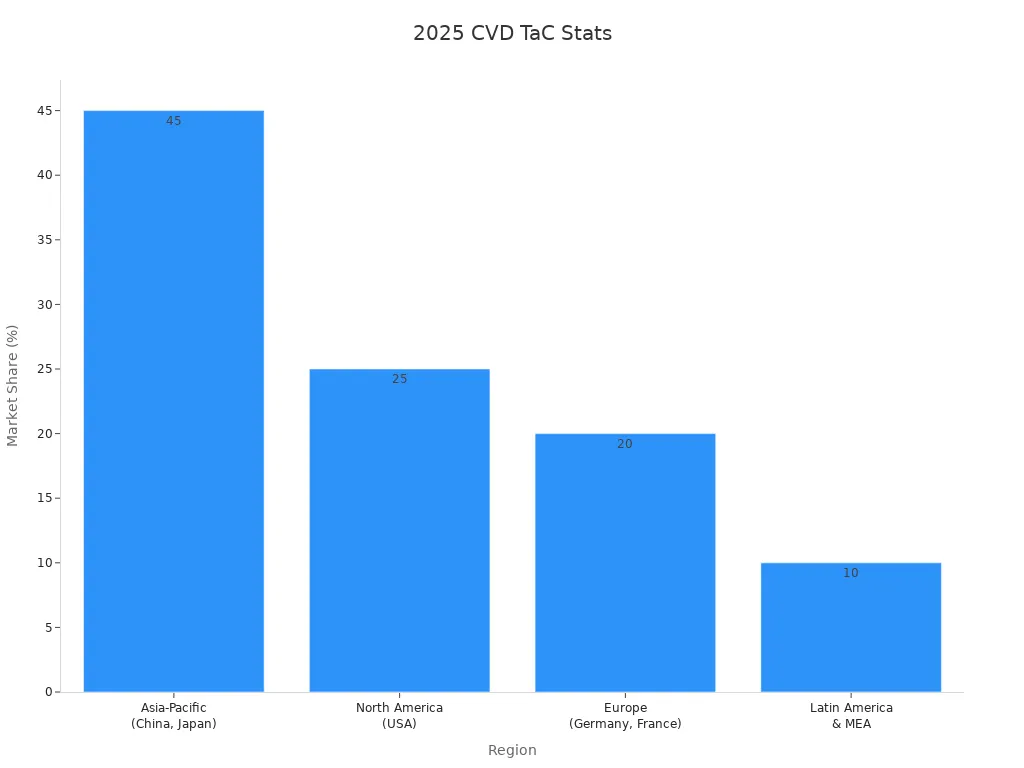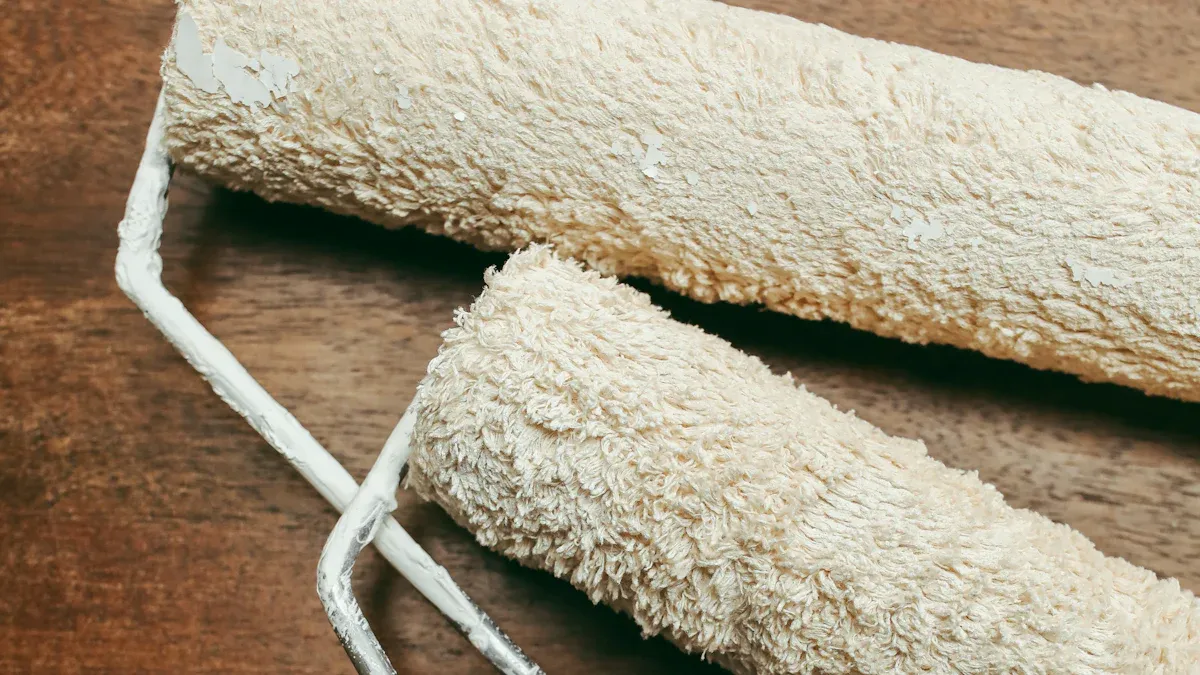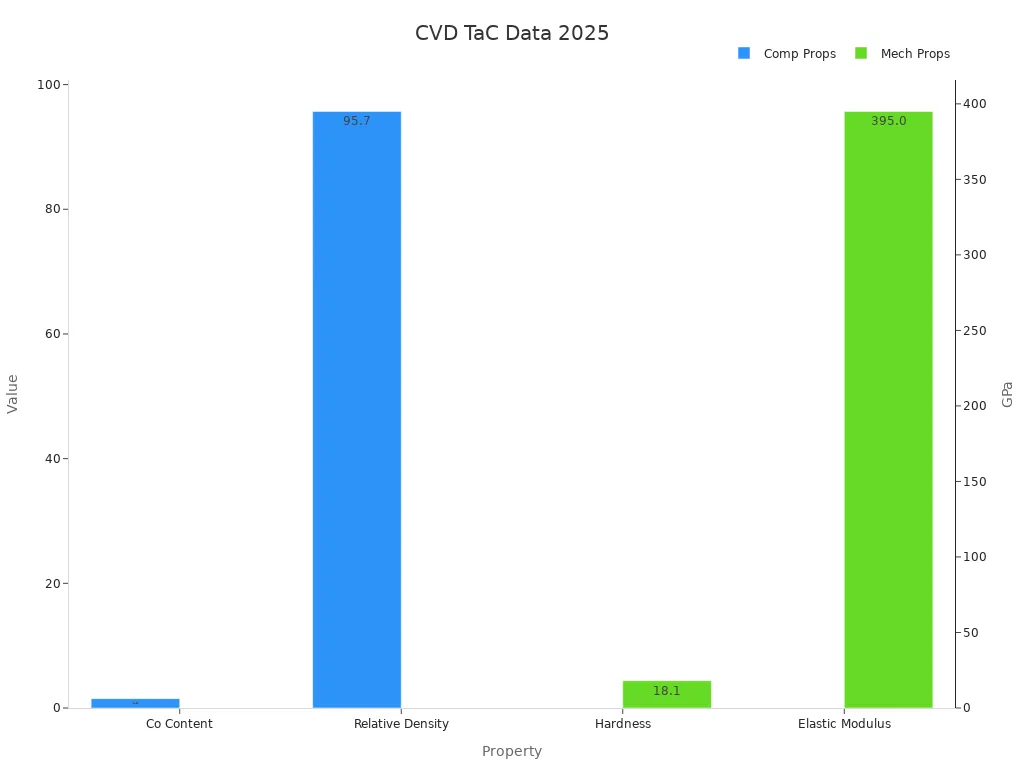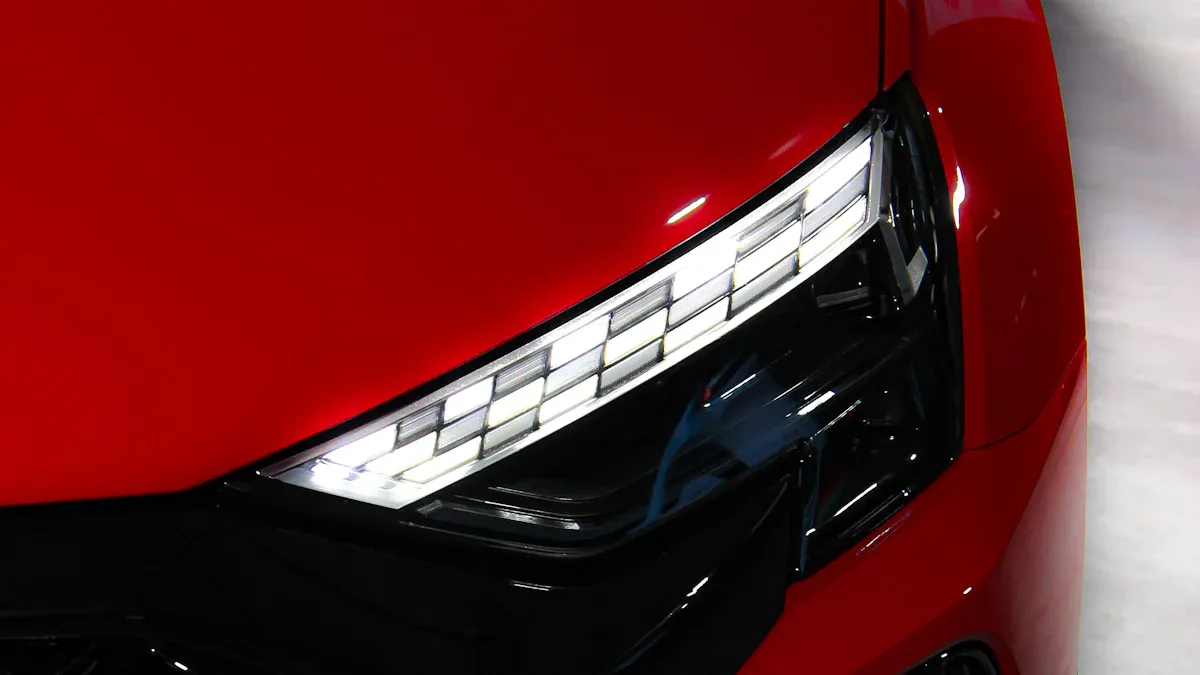
CVD TAC COATING delivers outstanding durability and performance for critical industries. Recent studies show acicular TAC COATING structures maintain integrity under extreme conditions, reducing oxidation and mass loss.
Engineers select CVD TAC COATING and CVD SIC COATING for advanced semiconductor, energy, and metallurgy applications. SIC COATING and TAC COATING meet modern demands for both thermal and chemical resistance.
Key Takeaways
- Prepare substrates carefully using the right gases and cleaning methods to ensure strong, durable CVD TaC coatings with fewer defects.
- Optimize process parameters like temperature, gas ratios, and coating thickness to improve toughness, ablation resistance, and overall coating quality.
- Adopt advanced technologies such as smart monitoring and eco-friendly methods to enhance coating performance, reduce waste, and meet environmental goals.
Essential CVD TaC Coating Application Techniques for 2025

CVD TaC Coating Substrate Preparation for Maximum Adhesion
Proper substrate preparation forms the foundation for high-performance CVD TaC coating. Engineers select tantalum halide and hydrocarbon gases as precursors, which decompose at relatively low temperatures. This approach reduces defects and preserves the mechanical properties of the substrate. Gas flow rates, especially argon and hydrogen, play a critical role in controlling temperature, pressure, and gas flow fields. These factors directly affect the coating’s composition and structure.
- Increasing argon flow slows coating growth and reduces grain size, resulting in a more uniform layer.
- Maintaining optimal molar ratios, such as hydrogen to tantalum chloride at 15-20:1 and tantalum chloride to propylene near 3:1, prevents the formation of unwanted phases like Ta2C or free carbon. These phases can degrade adhesion and coating quality.
Microstructural analyses reveal that multilayer coatings, such as PyC/SiC/TaC/PyC on C/C composites, enhance both flexural strength and interfacial shear strength. These multilayer designs show well-defined interlayer structures, which contribute to improved adhesion and mechanical properties.
Tip: Consistent substrate cleaning and surface activation further improve coating adhesion, especially for advanced applications in aerospace and electronics.
| Parameter | Effect on Adhesion and Quality | Supporting Details and Outcomes |
|---|---|---|
| Gas Flow Rate | Controls surface morphology and grain size | Higher Ar flow produces smaller, uniform grains. Correct molar ratios prevent defects. |
| Deposition Temperature | Influences grain size and internal stress | Optimal range (800-1000°C) balances crystal formation and minimizes free carbon. |
| Deposition Pressure | Affects grain size and coating density | Higher pressure increases deposition rate and grain size. |
| Coating Structure | Multilayer coatings improve adhesion | Multilayer PyC/SiC/TaC/PyC coatings enhance flexural and interfacial strength. |
| Gas Precursors | Enable controlled composition | Tantalum halides and hydrocarbons yield high-purity, dense, uniform coatings. |
Ningbo VET Energy Technology Co., Ltd applies these advanced substrate preparation techniques to ensure maximum adhesion and durability for CVD TaC coating in demanding environments.
Optimizing CVD TaC Coating Process Parameters
Process parameter optimization determines the final performance of CVD TaC coating. Researchers have demonstrated that alternate laminated sublayers with acicular, nanocrystals, and columnar crystals significantly improve toughness and ablation resistance. Controlled deposition temperature influences crystallite size and morphology. Lower temperatures favor nanocrystal formation, while higher temperatures increase grain size and deposition rate.
Adjusting gas ratios, such as CH4/(TaCl5 + SiCl4) and H2/(TaCl5 + SiCl4), allows precise control over phase composition and crystallite formation. Maintaining a coating thickness of approximately 60 μm ensures comparability and consistent protection.
Continuous and cyclic ablation tests under oxyacetylene flame conditions confirm that columnar crystal sublayers provide the best ablation resistance due to enhanced toughness. In contrast, coatings with only acicular crystals experience mechanical denudation and exfoliation from thermal expansion mismatch. Nanocrystal sublayers may suffer spallation from gaseous product damage.

Experimental studies on CVD TaC coatings applied to C/C composites demonstrate significant ablation resistance under various temperature conditions. These results confirm the practical effectiveness of CVD TaC coating in protecting substrates from high-temperature erosion. The global market for Tantalum Carbide coatings is projected to grow from USD 1.2 billion in 2023 to approximately USD 2.5 billion by 2032, reflecting a compound annual growth rate of 8.5%. This growth highlights the efficiency and rising adoption of CVD application techniques for TaC coatings in aerospace, automotive, and electronics industries.
Post-Treatment Methods for Enhanced CVD TaC Coating Performance
Post-treatment methods further enhance the durability and performance of CVD TaC coating. These treatments improve microhardness, wear resistance, and corrosion stability. For example, post-treated coatings achieve microhardness values up to 34 GPa and maintain a low coefficient of friction (0.05 to 0.11) under loads up to 40 MPa. After 400 wear cycles, the surface shows no scoring, indicating excellent wear resistance.
| Performance Metric | Value / Description |
|---|---|
| Microhardness | 34 GPa |
| Coefficient of Friction | 0.05 to 0.11 under loads up to 40 MPa |
| Wear Resistance | No surface scoring after 400 wear cycles |
| Corrosion Resistance | Electrochemical impedance ~10^7 Ohm·cm² (2 orders magnitude higher than uncoated alloy) |
| Stability in Corrosive Environment | Maintains impedance after 48h exposure to 3.5% NaCl solution |
Post-treatment CVD TaC coatings exhibit significant improvements in corrosion resistance and chemical stability. The dense and uniform microstructure maintains stability at elevated temperatures and in corrosive environments, such as those found in semiconductor manufacturing. The enhanced corrosion resistance results from the dense TaC layer, which effectively protects the substrate. Ningbo VET Energy Technology Co., Ltd leverages these post-treatment methods to deliver coatings that meet the highest standards for advanced engineering applications.
Emerging CVD TaC Coating Trends and Best Practices

Advanced CVD TaC Coating Deposition Technologies
Engineers now use advanced deposition methods to improve CVD TAC COATING performance. Atomic layer deposition (ALD) and plasma-enhanced CVD (PECVD) allow for precise control of coating thickness and uniformity. These technologies help create coatings with fewer defects and better coverage, even on complex shapes. Many companies invest in hybrid systems that combine ALD and traditional CVD. This approach gives engineers more flexibility and better results for high-temperature and high-wear applications.
Smart Monitoring and Quality Control in CVD TaC Coating
Smart monitoring tools now play a key role in quality control. Sensors track temperature, gas flow, and pressure during the CVD TAC COATING process. Real-time data helps operators make quick adjustments. Automated systems use machine learning to spot problems early. This reduces waste and ensures each batch meets strict standards. Quality control teams use digital records to trace every step, which helps with audits and improves reliability.
Tip: Use smart sensors and data analytics to catch coating issues before they affect product quality.
Eco-Friendly and Cost-Effective CVD TaC Coating Innovations
Sustainability has become a top priority. New CVD TAC COATING processes use less energy and produce fewer emissions. Water-based cleaning steps replace harsh chemicals. Recyclable materials and closed-loop systems help cut costs and reduce waste. Many manufacturers now choose eco-friendly options to meet regulations and attract customers who value green practices.
Engineers achieve superior results by using advanced substrate preparation, optimized process parameters, and post-treatment methods. Leading trends include smart monitoring and eco-friendly innovations. Companies that adopt these CVD TAC COATING best practices see improved durability and performance. Experts recommend staying updated with new technologies for long-term success.
FAQ
What industries benefit most from CVD TaC coating in 2025?
Aerospace, semiconductor, and energy sectors see the greatest benefits. These industries require high durability, thermal stability, and chemical resistance for advanced applications.
How does smart monitoring improve CVD TaC coating quality?
Smart monitoring uses sensors and data analytics. Operators detect process issues early, ensuring consistent coating thickness and fewer defects.
Are eco-friendly CVD TaC coating methods cost-effective?
Yes. Eco-friendly methods reduce energy use and waste. Companies save money while meeting environmental regulations and customer expectations.


